Potently neutralizing and protective human antibodies against SARS-CoV-2
- PMID: 32668443
- PMCID: PMC7584396
- DOI: 10.1038/s41586-020-2548-6
Potently neutralizing and protective human antibodies against SARS-CoV-2
Abstract
The ongoing pandemic of coronavirus disease 2019 (COVID-19), which is caused by severe acute respiratory syndrome coronavirus 2 (SARS-CoV-2), is a major threat to global health1 and the medical countermeasures available so far are limited2,3. Moreover, we currently lack a thorough understanding of the mechanisms of humoral immunity to SARS-CoV-24. Here we analyse a large panel of human monoclonal antibodies that target the spike (S) glycoprotein5, and identify several that exhibit potent neutralizing activity and fully block the receptor-binding domain of the S protein (SRBD) from interacting with human angiotensin-converting enzyme 2 (ACE2). Using competition-binding, structural and functional studies, we show that the monoclonal antibodies can be clustered into classes that recognize distinct epitopes on the SRBD, as well as distinct conformational states of the S trimer. Two potently neutralizing monoclonal antibodies, COV2-2196 and COV2-2130, which recognize non-overlapping sites, bound simultaneously to the S protein and neutralized wild-type SARS-CoV-2 virus in a synergistic manner. In two mouse models of SARS-CoV-2 infection, passive transfer of COV2-2196, COV2-2130 or a combination of both of these antibodies protected mice from weight loss and reduced the viral burden and levels of inflammation in the lungs. In addition, passive transfer of either of two of the most potent ACE2-blocking monoclonal antibodies (COV2-2196 or COV2-2381) as monotherapy protected rhesus macaques from SARS-CoV-2 infection. These results identify protective epitopes on the SRBD and provide a structure-based framework for rational vaccine design and the selection of robust immunotherapeutic agents.
Figures

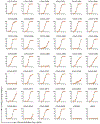
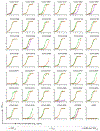
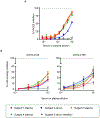


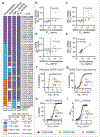
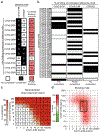



Update of
-
Potently neutralizing human antibodies that block SARS-CoV-2 receptor binding and protect animals.bioRxiv [Preprint]. 2020 May 22:2020.05.22.111005. doi: 10.1101/2020.05.22.111005. bioRxiv. 2020. Update in: Nature. 2020 Aug;584(7821):443-449. doi: 10.1038/s41586-020-2548-6. PMID: 32511409 Free PMC article. Updated. Preprint.
References
Publication types
MeSH terms
Substances
Grants and funding
- 75N93019C00074/AI/NIAID NIH HHS/United States
- 75N93019C00062/AI/NIAID NIH HHS/United States
- WT_/Wellcome Trust/United Kingdom
- S10 RR028106/RR/NCRR NIH HHS/United States
- T32 AI138932/AI/NIAID NIH HHS/United States
- U01 AI150739/AI/NIAID NIH HHS/United States
- T32 AI007163/AI/NIAID NIH HHS/United States
- R35 HL145242/HL/NHLBI NIH HHS/United States
- UL1 TR002243/TR/NCATS NIH HHS/United States
- R01 AI130591/AI/NIAID NIH HHS/United States
- T32 AI007151/AI/NIAID NIH HHS/United States
- T32 AI095202/AI/NIAID NIH HHS/United States
- R01 AI157155/AI/NIAID NIH HHS/United States
- F32 AI138392/AI/NIAID NIH HHS/United States
- F31 AI145189/AI/NIAID NIH HHS/United States
- F30 AI152327/AI/NIAID NIH HHS/United States
LinkOut - more resources
Full Text Sources
Other Literature Sources
Molecular Biology Databases
Miscellaneous

